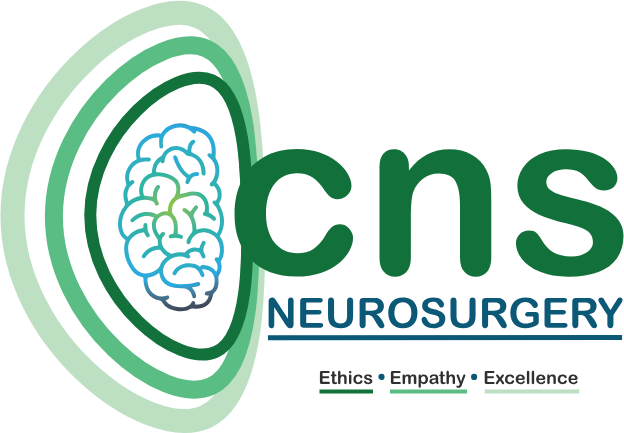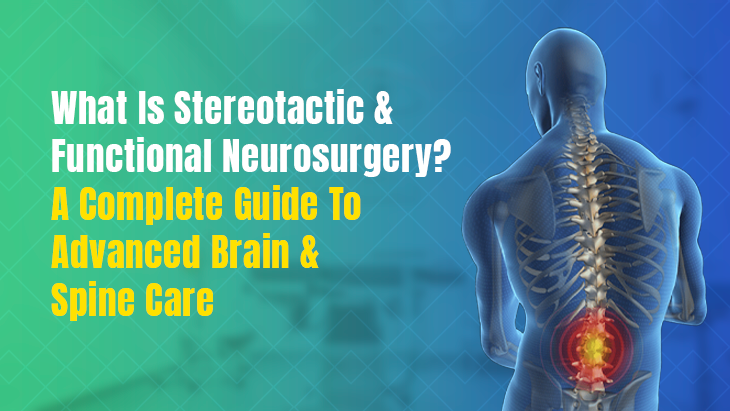Stereotactic and functional neurosurgery represents a revolutionary advancement in the treatment of neurological disorders. It combines precision, innovation, and advanced technology to treat conditions affecting the brain and spine. This guide explores the fundamentals of stereotactic and functional neurosurgery, the conditions it addresses, and why it is transforming patient care worldwide.
What is Stereotactic Neurosurgery?
Stereotactic neurosurgery is a minimally invasive surgical technique that uses 3D imaging and computer-assisted planning to accurately target specific areas of the brain. It involves the use of a stereotactic frame or frameless system that allows neurosurgeons to navigate the brain with sub-millimeter precision.
This method is particularly effective for treating deep-seated brain lesions, tumors, and movement disorders(Parkinson’s disease, tremors, dystonia), epilepsy, pain, as it minimizes damage to surrounding healthy tissue.
Key Features of Stereotactic Neurosurgery:
- High Precision: Targets small, hard-to-reach areas in the brain.
- Minimally Invasive: Reduces trauma, scarring, and recovery time.
- Guided Imaging: Uses MRI, CT scans, or X-rays for accurate mapping.
- Versatile Applications: Suitable for biopsies, radiosurgery, and implantation of electrodes.
What is Functional Neurosurgery?
Functional neurosurgery focuses on improving or restoring neurological function in patients with disorders that affect movement, sensation, or other brain activities. This field is dedicated to treating conditions caused by abnormal neural circuits through techniques such as neuromodulation and lesioning.
Applications of Functional Neurosurgery:
- Deep Brain Stimulation (DBS): Used for Parkinson’s disease, dystonia, and tremors.
- Spinal Cord Stimulation (SCS): Treats chronic pain conditions, paraplegia, gait disturbances
- Ablative Procedures: Targets and destroys dysfunctional brain tissue causing seizures or tremors.
- Vagus Nerve Stimulation (VNS): Helps in managing epilepsy, depression & post-stroke recovery.
- Sacral Nerve Stimulation (SNS)/Sacral Neuromodulation (SNM): improves issues related to bladder and bowel incontinence of any cause
- Peripheral Nerve stimulations: For diaphragmatic palsy, intractable headache syndromes, bladder incontinence etc.
Conditions Treated with Stereotactic & Functional Neurosurgery
- Movement Disorders: Parkinson’s disease, essential tremors & all other type of tremors, dystonia, Gait disturbances etc.
- Epilepsy: Uncontrolled seizures that do not respond to medication.
- Chronic Pain Syndromes: All types of Neuropathic pain, cancer-related pain other intractable pain syndromes
- Brain Tumors and Lesions: Precise removal or biopsy of tumors.
- Psychiatric Disorders: Obsessive-compulsive disorder (OCD), Tourette Syndrome and depression resistant to therapy.
- Hydrocephalus and Other Structural Disorders: Fluid drainage and management.
Benefits of Stereotactic & Functional Neurosurgery
- Precision and Safety: Highly accurate targeting reduces risks and complications.
- Minimally Invasive Techniques: Faster recovery and minimal scarring.
- Customizable Treatments: Tailored procedures for individual conditions.
- Improved Quality of Life: Restores motor functions and reduces chronic pain.
- Long-Term Results: Durable and effective solutions for neurological conditions.
The Technology Behind the Procedures
Modern stereotactic and functional neurosurgery utilizes advanced technologies such as:
- Sterotactic frame: Acts as a guide to the target and gives submillimeter accurancy.
- Neuro-Navigation Systems: 3D mapping for surgical planning.
- Intraoperative Imaging: Real-time visualization during surgery.
- Robotic Assistance: Enhances precision and reduces surgeon fatigue.
- Electrophysiological Monitoring: Ensures safety during brain stimulation.
Preparing for Surgery: What Patients Should Know
- Pre-Surgical Evaluation: Includes neurological exams, imaging tests, and psychological assessments.
- Personalized Treatment Plans: Customized approaches based on condition and goals.
- Minimized Risks: Comprehensive planning reduces complications.
- Post-Operative Care: Focuses on rehabilitation and monitoring for optimal recovery.
Why Ahmedabad is Leading in Neurosurgical Innovations
Ahmedabad has rapidly emerged as a hub for advanced neurosurgical treatments due to its
world-class infrastructure, cutting-edge technology, and highly skilled specialists
. The city offers affordable and accessible care while maintaining international standards, attracting patients from across India and abroad.
Meet Dr. Chirag Solanki – A Pioneer in Neurosurgery
Ahmedabad’s reputation in advanced brain and spine care has been significantly elevated by
Dr. Chirag Solanki, the best neurosurgeon in Ahmedabad and FIRST Stereotactic & Functional Neurosurgeon of the state. Dr. Solanki’s expertise in precision-driven neurosurgical techniques has brought transformative care to patients suffering from complex neurological disorders. His contributions have placed Ahmedabad on the global map for cutting-edge neurosurgery, ensuring patients receive world-class treatment close to home.

